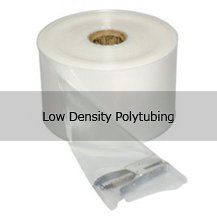POLY TUBING
Poly Tubing
Poly tubing is a flat, plastic tubing made of polyethylene (typically low density) designed for packaging, storing, and transporting products. This tubing is used in applications that need corrosion and water resistance, as well as a durable and flexible packaging material, such as the pharmaceutical industry.
Poly tubing comes in a variety of lengths, thicknesses, and aesthetics depending on your needs, and this material can easily be cut to size as well. The end(s) can be sealed with a bag sealer, heat, plastic, or stapled
Pink Anti Static Poly Tubing
- Pink, transparent film provides protection against static discharge. Ideal for circuit boards, resistors, and other electronic components.
- Manufactured from 100% virgin low density polyethylene and designed to be heat sealed, stapled at either one or both ends.
- Anti-static poly tubing are available in 2 to 4 Mil thickness, featuring pink anti-static polyethylene film that provides excellent static discharge protection. The static dissipative, non-corrosive pink polyethylene is heat sealable. The tubing offers the luxury of a custom fit poly bag and the flexibility of a wide variety of bag sizes without the inventory expense




